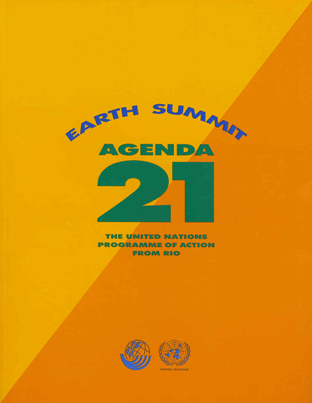Wednesday, April 7, 2010
Click here to download The Network Society Podcast
Saturday, March 27, 2010
What does the word community mean in the sustainable development field?

Jackson, T. (2005, May 19). Motivating Sustainable Consumption A Review of Evidence on Consumer. Retrieved from Docstoc: http://www.docstoc.com/docs/7874847/Motivating-Sustainable-Consumption-A-Review-of-Evidence-on-Consumer
Thursday, March 18, 2010
Short news: Information overflow



Richard J. Evans: "What I tried to do was visually represent the way information is so easily leaked into today’s society, through the Internet and television. Pretty much anything you can imagine, you can get your hands on. With such an abundance of information, I feel as though it over-flows into our lives and the typography is purposefully hard to read to reflect this."
Monday, March 15, 2010
How is information a 'public good' in the sustainable development field?
The word information refers to something intangible that is non-depletable, as a contrary to natural ressources (The Scholarly Kitchen, 2009). It also has the property to be non-rival in the way that if I am using a source of information, it doesn't prevent anybody else to use exactly the same source. Thus there is no background of something private which has the intrinsic characteristic of ownership. If I am reading an article on the Internet environmentalist website www.novethic.com, it will not entrave anybody else to read exactly the same news. So what are the characteristics of information as a public good in the sustainable development field?
From the definition of the Linux Information project (2006), economists use the therm public good to refer to a good or service which can be consumed indefinitely without reducing the quantity available for other persons. About information, we went from private good with material media (newspapers, magazines) that are owned by editors, to digital media that gives information the trait of a public good: “The development of distributed digital information through network browsers has radically changed many of the traditional institutions of... communication” (Hess et al's, 2001). Thus, the point about digital information is that it can be spread easily and as a result could be copying. This act illustrates the non-rivalry of information that makes it a public good. The idea of copying is developed in the Scholarly Kitchen website, saying that an overuse of information doesn't make it scare, but do exactly the opposite. In doing so, information become infinitely expansible: each user of the Internet can duplicate, create and distribute information. From an article writing in the New-York Times, an Internet user can react on its blog to modify and add content from the original article, to create new reactions in other blogs and new articles in other news websites, and so on.
As a result, traditional communication has changed to make information rhyme with participation. Information is here all about participatory media content. All kind of media are gathered and contents are created by both citizens and professional. Information is created through participatory media, like blogs, podcasts, and widely broadcasted to share green ideas all over the world. Participation in web 2.0 is best illustrated with the rise of the open source encyclopedia: wikipedia. “Open source production essentially involves producing a commodity as a public good” (Anthony, 2009). A parallel can be made with the “creative commons” movement which “enable authors,... and other creators of original content to establish more flexible... principles through which their work can be used and repurposed to serve non-commercial, public-good principles” (Flew, 2008). A movie available on the internet reflect this principle: “Home”, directed by a famous french photographer. You can freely see the whole movie on YouTube, without being charged or risking to be pursued for hacking.
--> link here: http://www.youtube.com/watch?v=jqxENMKaeCU
Another interesting example is on the Google search page, if you click on the link marked “advanced search,” and then on “usage rights” you can select “free to use or share” (Boyle, 2008).

Information should be shared and provided, the problem is that sometimes information is withhold, as the example of the movie “The Cove” which revealed a catastrophic information about how dolphin are butchered in the Japan town Taiji.
In the sustainable development field, information needs to be widely provided to citizen to increase their awareness about climate change and to keep them in touch with the reality. So what could be more a public good than information about sustainable development?
References
Flew, T. (2007). New Media: An Introduction. South Melbourne, Australia: Oxford University Press.
The Linux Information Project (2006, February 16). Public Goods: A Brief Introduction. Retrieved from The Linux Information Project http://www.linfo.org/public_good.html
Society for scholarly publishing (2009, April 9). Information as Property. Retrieved from The Scholarly Kitchen, what's hot and cooking in scholarly publishing: http://scholarlykitchen.sspnet.org/2009/04/09/information-as-property/
Hess, Charlotte & Ostrom Elinor (2001). Artifacts, Facilities, And Content: Information as a Common-pool Resource. Workshop in Political Theory and Policy Analysis, Indiana University: http://www.law.duke.edu/pd/papers/ostromhes.pdf
Anthony, D. (2009). Reputation and Reliability in Collective Goods. Rationality and Society, 21(3), 283-306. Retrieved from E-Journals database.
Boyle, James (2008). The Public Domain: Enclosing the Commons of the Mind. Retrieved from: http://www.thepublicdomain.org/
Monday, February 22, 2010
Transmedia storytelling in the sustainable environment field
For most communicators, this concept refers more on branding, and fiction stories than on factual stories. The word ‘Storytelling’ itself in the communication area refers to stories that a brand creates in order to build an emotional relationship with a potential customer. A patent example is the well-known Nespresso’s advertisement campaign (have a look below for the three episodes of the story).
More precisely, ‘transmedia’, refers to the different medium used to broadcast an entertaining story in a coherent and complementary way
A start of an answer could be that transmedia storytelling is grounded on collective intelligence through the idea of ‘transmedia activism’
The last proposition introduces the idea of transmedia activism in the extent it enhances the participative role of the audience in the storytelling content. With the use of multiple media, storytellers as NGO or green companies, develop transmedia storytelling to make their statement more “fashionable” and thus influence action and increase awareness. It is a prerequisite need because ‘any individual institution engaging an audience … is required to convey clearly and artfully what it does, how its does it, where its work is most effective and necessary, and why they should support efforts to continue or grow the institution’s work’
Applying transmedia storytelling to sustainable development differs from the fictional application because it provides tools to people to develop collective intelligence around the same issue in order to make them acting.
References
Flew, T. (2007). New Media: An Introduction. South Melbourne, Australia: Oxford University Press.
Jenkins, H. (2007, March 22). Transmedia Storytelling 101. Retrieved from Confessions of an Aca-Fan: The Official Weblog of Henry Jenkins: http://www.henryjenkins.org/2007/03/transmedia_storytelling_101.html
Srivastava, L. (2009, January 20). Transmedia Activism: Telling Your Story Across Media Platforms to Create Effective Social Change. Retrieved from MediaRights: http://www.mediarights.org/news/Transmedia_Activism_Telling_Your_Story_Across_Media_Platforms_to_Create_Eff/
TakePart. (2008). Climate Crisis. Retrieved from Climate Crisis: http://www.climatecrisis.net/
TakePart. (2008). TakePart Social Action Networ: Important Issues, Activism, Environmental, Human Rights, Politica News. Retrieved from TakePart: http://www.takepart.com/



